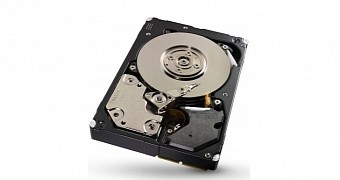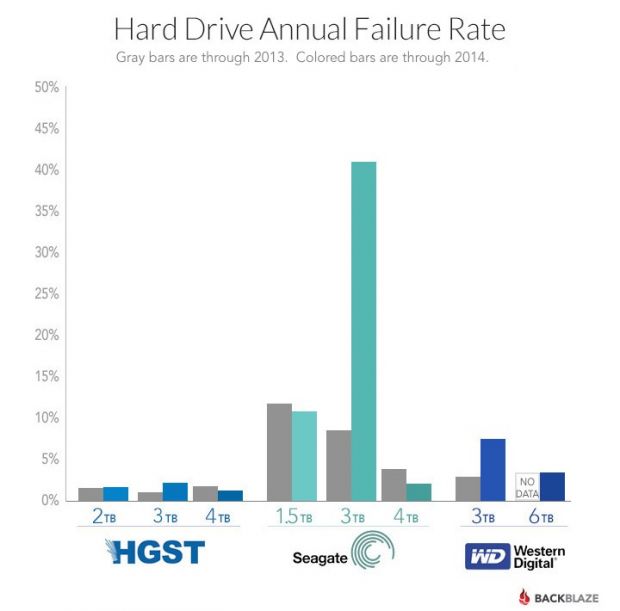Seagate's 3TB hard disk drive units were a nice curiosity when they finally came out, and they even got a decent number of customers. One of them, however, probably regrets it now. Even if regret didn't come into play, the customer is warning people away from committing the same mistake.
Backblaze has built an entire business around providing cloud storage to various clients, and it has been using 41,213 HDDs in its data center as of December 31, 2014.
Its storage arrays are a mixed bunch, with storage devices from Western Digital, HGST (now a sub-business of WD), and of course, Seagate.
It is the Seagate Barracuda 7200.14 3TB unit that has been causing problems throughout the entirety of 2014.
The failure rate has been of over 40% if you can believe it
For some reason, the failure rate comparison chart shows Seagate drives having the highest, followed by Western Digital and HGTX (Formerly Hitachi).
Backblaze reported that every single 4 TB they bought last year has had very low failure rates. Considering that their price was also quite convenient for the capacity, they were quite satisfied.
However, 3 TB drives have been failing the most in all cases, although none can compare to the Seagate Barracuda 7200.14 3TB unit.
While WD's 3 TB drives have shown a rate of almost 10%, and HGTS's units didn't go over 2.6%, Seagate's failed 43.1% annually.
Meanwhile, Seagate 4 TB HDDs have shown a 5% annual failure rate, followed by WD with 3-4% and HGST with barely 1.4%.
That leaves 1.5TB. Backblaze doesn't use any WD ones at present, but the Seagate models beat the HGST ones handily here too, with around 12% versus roughly 2%.
The conclusion
Western Digital was smart to acquire Hitachi, because HGST drives have the lowest failure rate. And they are just a small bit more expensive than 3 TB Seagate drives to boot.
This, needless to say, is worrisome and will probably prompt Backblaze to switch more and more to WD/HGST in the future, despite having used Seagate drives for only 2.2 years on average.
For comparison, the HGST in Backblaze's tested system arrays have been there for 3.9 years on average, though WD's have been in use for less time.

 14 DAY TRIAL //
14 DAY TRIAL // 

